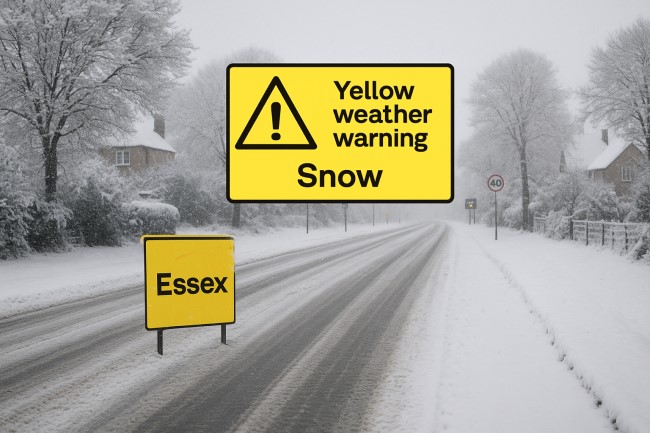Essex Snow Cold Snap Weather Brings Disruption and Safety Warnings

The Essex snow cold snap weather has taken many by surprise, blanketing towns and rural areas in layers of snow and ice. This unexpected cold front has triggered yellow weather warnings across the county and has led to major travel disruption, school closures, and heightened safety concerns. Residents are being urged to stay alert as the conditions continue to evolve. In this article, we dive deep into the causes, impacts, and safety advice surrounding Essex’s latest cold snap.
The Arrival of the Cold Snap in Essex
Sudden Drop in Temperatures
Over the past few days, Essex has seen a sharp decline in temperatures, with daytime highs struggling to reach above freezing and nighttime lows plummeting well below zero. Meteorologists attribute this cold spell to Arctic air sweeping in from the north, bringing with it not just frigid air but also moisture that turns into snow once it hits land.
Snow and Ice Blanket the Region
From Colchester to Chelmsford, the snow has coated roads, rooftops, and fields. In some areas, snow accumulation reached up to 10 cm overnight, with more flurries expected in the coming days. The Met Office has issued yellow weather warnings for snow and ice, highlighting the risk to both commuters and pedestrians.
Impacts Across Essex
Travel Chaos on Roads and Railways
One of the most immediate consequences of the Essex snow cold snap weather has been the disruption to transportation. Roads across the region have been affected, with several minor accidents reported due to black ice. Motorists are being advised to avoid non-essential travel and to drive slowly with extra caution if travel is necessary.
Train services, particularly those running through Greater Anglia routes, have also experienced delays and cancellations. Cold weather has led to frozen points on railway lines and reduced visibility for train conductors.
Bus and Air Travel Disruption
Bus services across the county have been delayed or suspended in some areas. Meanwhile, London Stansted Airport—located just outside Essex—has seen a few delays and minor flight cancellations due to de-icing procedures.
School Closures and Public Safety
Educational Institutions Respond
With pathways and schoolyards coated in ice, many schools across Essex have chosen to close or delay opening. Headteachers cite safety as the primary concern, as icy conditions increase the risk of slips and falls among children and staff alike.
Parents have been advised to check local council and school websites for regular updates on closures and revised timetables.
Emergency Services on High Alert
Local emergency services have ramped up efforts to respond to weather-related incidents. Essex Police and Fire & Rescue teams have warned residents to take precautions, especially the elderly and those with health conditions that may worsen due to exposure to cold.
Yellow Weather Warning: What It Means
Definition and Significance
The Met Office issues yellow weather warnings when the weather is likely to cause low-level disruption or when there is a small chance of severe weather. In this case, the warning covers snow and ice, making it essential for residents to stay vigilant.
Areas Affected
The current yellow warning spans the majority of Essex, including major towns such as Southend-on-Sea, Basildon, Harlow, and Brentwood. Rural and coastal regions are also affected, where snow accumulation is often heavier due to wind patterns.
What Residents Should Do
-
Keep up-to-date with the latest local weather forecasts.
-
Avoid unnecessary travel.
-
Use grit or salt on paths and driveways to prevent slips.
-
Dress in layers and keep emergency supplies ready.
Health and Home: How to Stay Safe
Protecting Your Home
Cold snaps can wreak havoc on home infrastructure. Frozen pipes, power outages, and heating failures are common during periods of severe cold.
Tips to weatherproof your home:
-
Let faucets drip slightly to prevent frozen pipes.
-
Keep your home heated to at least 18°C, even at night.
-
Ensure carbon monoxide detectors are functioning, especially if using heaters or fireplaces.
Health Hazards to Watch For
Cold weather can be particularly dangerous for vulnerable populations. Hypothermia, frostbite, and respiratory issues are all health concerns during a cold snap.
Health tips:
-
Check in on elderly neighbours or family members.
-
Wear hats, scarves, and gloves when outdoors.
-
Avoid strenuous activities like shoveling snow if you have heart or lung conditions.
Environmental Effects
Wildlife Struggles in Cold Weather
The Essex countryside is home to a wide range of wildlife. During cold snaps, animals struggle to find food and shelter. Conservationists are urging residents to support local wildlife by:
-
Leaving out bird feeders.
-
Breaking ice on ponds for drinking water.
-
Avoiding salt or chemicals that may harm animals.
The Bigger Picture: Are Cold Snaps Becoming More Common?
Climate experts are increasingly monitoring sudden cold snaps as part of broader climate change patterns. While global temperatures are rising on average, unusual weather events—like the Essex snow cold snap weather—are becoming more frequent and severe.
Scientists point to disrupted jet streams and Arctic warming as possible contributors to increased winter volatility in the UK.
Conclusion
The Essex snow cold snap weather has brought daily life to a near standstill, impacting transportation, education, and public safety. With yellow weather warnings still in place, residents are urged to stay cautious and prepare for ongoing disruptions. While the snow may create picturesque views, it’s crucial to remember the hidden dangers it brings.
By staying informed, taking the necessary precautions, and supporting vulnerable members of the community, Essex can weather this storm safely and responsibly.



